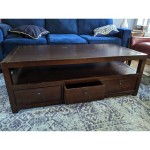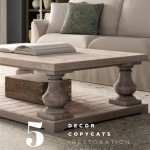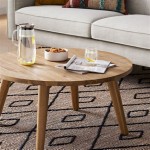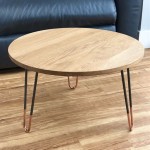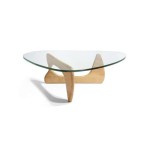```html
Natural Wood Coffee Table: A Modern Centerpiece
The natural wood coffee table has become a ubiquitous element in modern interior design, prized for its ability to seamlessly blend organic warmth with contemporary aesthetics. Unlike tables constructed from engineered materials or those heavily treated with artificial finishes, a natural wood coffee table showcases the inherent beauty of the timber, bringing a touch of the outdoors into the living space. This article will explore the various facets of the natural wood coffee table, focusing on the characteristics that define its modern appeal, the types of wood commonly utilized, design considerations, and maintenance practices.
Understanding "Natural Wood" and its Modern Interpretation
The term "natural wood" in the context of coffee tables generally refers to solid wood or wood veneer that has been treated with minimal processing to preserve its organic texture and coloration. While some level of sealant or finish is necessary to protect the wood from moisture and wear, the goal is to maintain the wood's inherent characteristics, showcasing its grain patterns, knots, and variations in tone. Modern interpretations of "natural" often lean towards low-VOC (volatile organic compound) finishes, emphasizing eco-friendliness and reducing potential health risks. This contrasts with heavily lacquered or stained finishes that obscure the wood's natural qualities.
The modern aesthetic applied to natural wood coffee tables prioritizes simplicity, clean lines, and functionality. Elaborate carvings or ornate details are generally avoided in favor of designs that highlight the inherent beauty of the wood itself. The focus is on the wood's grain, color variations, and the unique character each piece possesses. Modern designs often incorporate minimalist metal legs or bases, creating a visually striking contrast between the organic warmth of the wood and the sleekness of the metal.
Furthermore, the concept of sustainability plays a crucial role in the modern interpretation of natural wood. Responsible manufacturers often source wood from sustainably managed forests, ensuring that the timber is harvested in a way that minimizes environmental impact and promotes forest regeneration. Choosing a coffee table made from reclaimed wood or repurposed timber is another eco-conscious option that aligns with modern values.
Popular Wood Types and Their Characteristics
The choice of wood significantly impacts the overall aesthetic and functionality of the coffee table. Different wood species possess distinct characteristics in terms of color, grain pattern, hardness, and durability. Here are some of the most popular wood types used in natural wood coffee tables:
Oak: Renowned for its strength and durability, oak is a classic choice for coffee tables. It features a prominent grain pattern and is available in a variety of colors, ranging from light tan to reddish-brown. White oak is particularly popular due to its water resistance and closed grain.
Walnut: Prized for its rich, dark brown color and elegant grain pattern, walnut exudes sophistication and warmth. It is a relatively hard and stable wood, making it suitable for high-use furniture. Walnut coffee tables often command a premium price due to the wood's inherent beauty and scarcity.
Maple: Maple is a light-colored hardwood with a fine, uniform grain. It is a versatile wood that can be stained to achieve a variety of different looks. Hard maple is particularly resistant to scratches and dents, making it a good choice for families with children or pets. Soft maple is more easily worked and often used in smaller components or accent pieces.
Pine: A softwood with a light color and distinctive knotty grain, pine offers a rustic and casual aesthetic. It is a more affordable option than hardwoods like oak or walnut. Pine is relatively soft and can be susceptible to scratches and dents, but its natural charm and affordability make it a popular choice for informal living spaces.
Acacia: Increasingly popular for its affordability and durability, acacia boasts a beautiful grain pattern similar to teak. It is naturally water-resistant and often used for outdoor furniture, but its versatility also makes it suitable for indoor use. Acacia's color ranges from golden brown to dark reddish-brown.
Reclaimed Wood: Using reclaimed wood for coffee tables is a sustainable and aesthetically pleasing option. Reclaimed wood, salvaged from old buildings, barns, or other structures, possesses a unique character and patina that cannot be replicated. It often features nail holes, saw marks, and other imperfections that add to its rustic charm. Reclaimed wood can come from a variety of wood species, depending on the source.
Design Considerations and Integration into Modern Spaces
When selecting a natural wood coffee table, several design considerations are important to ensure it complements the existing décor and serves its intended purpose effectively. These considerations include size, shape, leg design, and finish.
Size and Shape: The size of the coffee table should be proportionate to the size of the sofa and the overall dimensions of the living room. As a general rule, the coffee table should be approximately two-thirds the length of the sofa. The shape of the table should also complement the layout of the room. Rectangular coffee tables are well-suited for long sofas, while round or oval tables work well in smaller spaces or with sectional sofas. Square coffee tables can create a sense of symmetry and balance in a room.
Leg Design: The leg design contributes significantly to the overall aesthetic of the coffee table. Simple, tapered legs create a minimalist and contemporary look, while hairpin legs add a touch of mid-century modern flair. Metal legs in black or brushed steel offer a sleek and industrial feel. For a more rustic or farmhouse style, consider coffee tables with thick, chunky legs or trestle bases.
Finish: The finish of the wood plays a crucial role in highlighting its natural beauty and protecting it from wear and tear. A clear, matte finish preserves the wood's natural color and grain, while a light stain can enhance its warmth and richness. Avoid finishes that are too glossy or artificial-looking, as they can detract from the wood's organic appeal. Oil-based finishes provide excellent protection and enhance the wood's natural sheen, while water-based finishes are more eco-friendly and easier to clean.
Integrating into Modern Spaces: A natural wood coffee table can be integrated into a variety of modern interior design styles. In minimalist spaces, a simple, clean-lined table made from light-colored wood can add a touch of warmth and texture without overwhelming the space. In industrial-style rooms, a coffee table made from reclaimed wood with metal legs can complement the raw and rugged aesthetic. In bohemian-inspired spaces, a coffee table made from acacia or mango wood with a natural finish can add a touch of global warmth. The key is to choose a table that complements the existing color palette, materials, and overall style of the room.
Beyond its aesthetic appeal, a coffee table should also be functional. Consider incorporating storage solutions, such as drawers, shelves, or lift-top mechanisms, to maximize its utility. A coffee table with a lift-top can be used as a temporary desk or dining surface, while drawers and shelves can provide storage for books, magazines, remote controls, and other living room essentials.
Maintenance and Care for Longevity
Proper maintenance and care are essential to preserve the beauty and longevity of a natural wood coffee table. Regular cleaning and protection from moisture and sunlight are crucial for preventing damage and maintaining the wood's natural luster.
Cleaning: Dust the coffee table regularly with a soft, dry cloth to remove dust and debris. For spills, wipe them up immediately with a damp cloth. Avoid using harsh chemicals or abrasive cleaners, as they can damage the finish. For more stubborn stains, use a mild soap and water solution. Always test the solution on an inconspicuous area first to ensure it does not damage the finish.
Protection from Moisture: Protect the coffee table from moisture by using coasters under drinks and placemats under hot dishes. Avoid placing wet items directly on the surface of the table, as this can cause water rings or warping. If the table is exposed to excessive moisture, dry it thoroughly with a soft cloth.
Protection from Sunlight: Prolonged exposure to direct sunlight can cause the wood to fade or discolor. Position the coffee table away from direct sunlight or use curtains or blinds to filter the light. Consider using a UV-resistant finish to protect the wood from harmful rays.
Oiling and Waxing: For coffee tables with oil-based finishes, regular oiling can help to replenish the wood's natural oils and prevent it from drying out. Apply a thin coat of furniture oil with a soft cloth and buff it in thoroughly. For coffee tables with wax finishes, waxing can help to protect the finish from scratches and scuffs. Apply a thin coat of furniture wax with a soft cloth and buff it to a shine.
By following these simple maintenance tips, one can ensure that a natural wood coffee table remains a beautiful and functional centerpiece of the living room for years to come.
```
Modern 41 7 In Natural Rectangle Wood Coffee Table With Modular Splicing Design

Fuin Modern Farmhouse Wood Round Natural Finish Living Room Coffee Table Set F04066

Ellipse Large Coffee Table For Living Room Natural Walnut Modern Decorative Custom Design With Glass Top

Wood Coffee Table Live Edge Rustic Farmhouse Mid Century Modern

Square Modern Solid Wood Coffee Table With Lower Shelf

Modern Light Wood Rectangular Coffee Table For Living Room 1200mm Wooden Homary

T1009 32 Contemporary Style Jungle Wood Coffee Table In Natural Color

Fence Coffee Table

Nesnesis Modern Round Lift Top Nesting Wood Coffee Tables With 2 Drawers White Natural

Brownstone Ii 54 Natural Wood And Black Cocktail Table 093p6 Lamps Plus

